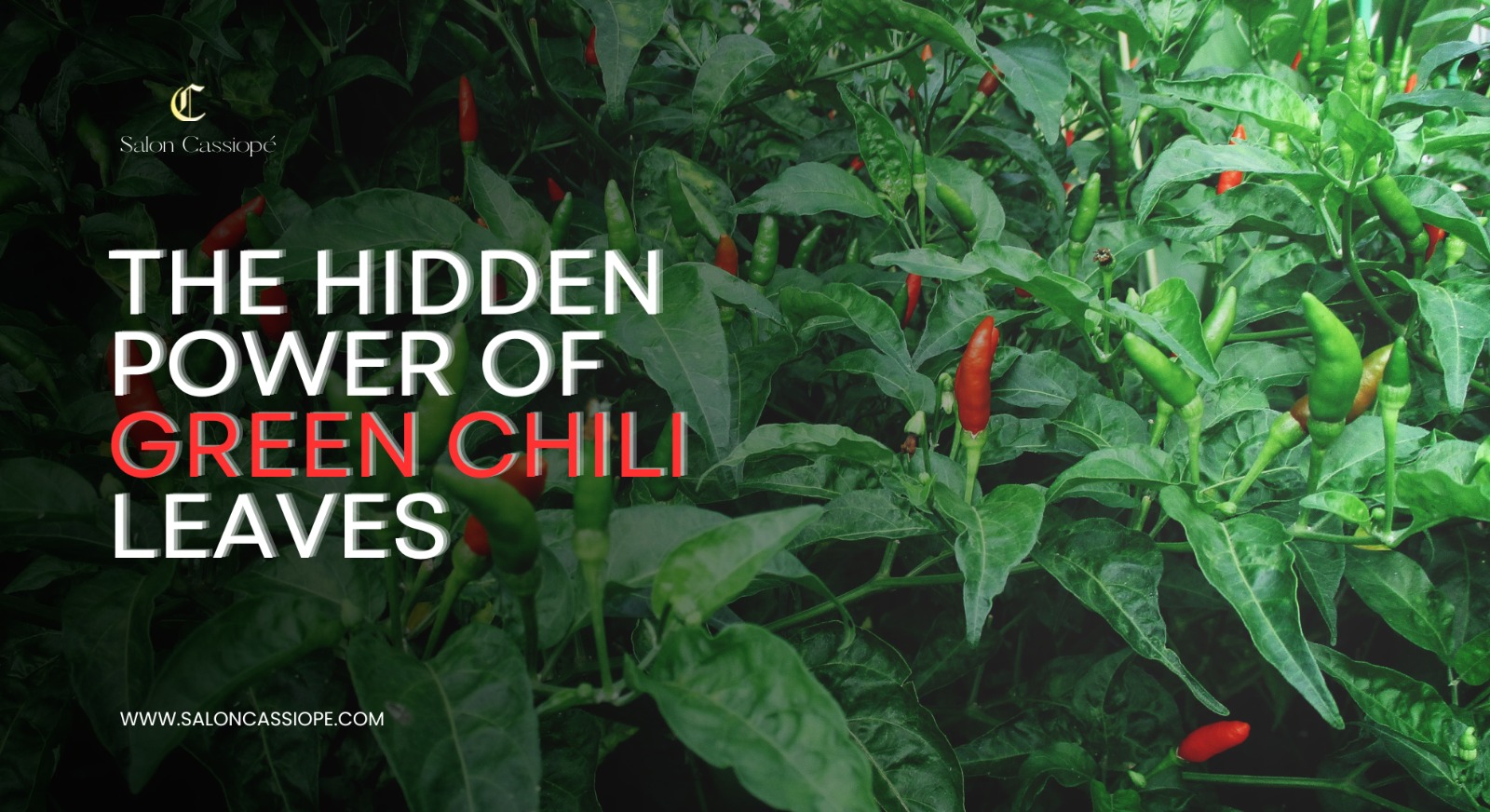Many people are simply unaware of the potential benefits of green chili leaves. While they are used in certain traditional cuisines and remedies, this knowledge hasn’t been as widely spread or popularized as other herbs and vegetables.
green chili leaves are not spicy. Unlike the fruit of the chili plant, which contains capsaicin (the compound responsible for the heat), the leaves do not have this characteristic spiciness. Green chili leaves have a mild, slightly bitter taste, which is more akin to leafy greens like spinach or other similar vegetables. This makes them suitable for use in various dishes and remedies without adding heat.
Green chili leaves are indeed less commonly discussed compared to the chili peppers themselves and there are a few reasons for this:
• Perception of Leaves as Secondary:
In many plants, the fruit or seeds are often considered the primary product, with the leaves or other parts seen as secondary or less valuable. This perception may contribute to the lack of focus on green chili leaves.
- Limited Culinary Use:
Green chili leaves are used in certain regional cuisines, especially in Southeast Asia and some parts of India, but their use is not as widespread as other leafy greens. Because they are less common in mainstream recipes, they haven’t gained the same level of attention. - Availability and Harvesting:
Green chili leaves are often less available in markets because they are not a major commercial product. Farmers and vendors tend to focus on selling the more profitable chili fruits, leading to less visibility and usage of the leaves. - Cultural and Regional Variations:
The use of green chili leaves is more common in certain cultures and regions where traditional knowledge about their benefits has been preserved. Outside these areas, the leaves are not as well-known or utilized. •Focus on the Fruit: - The chili fruit, known for its heat and flavor, has been the primary focus of culinary and medicinal use. The capsaicin in the fruit is well-known for its health benefits, culinary applications, and its role in traditional remedies, which often overshadows the leaves. Despite these factors, green chili leaves are nutritious and can be beneficial for health, making them a hidden gem in the world of herbs and vegetables. As more people become interested in exploring traditional and lesser-known remedies, there could be a growing interest in these leaves and their uses.
Skin and Health Benefits of Green Chili Leave
Rich in Nutrients:
-Green chili leaves are high in vitamins A and C, which are crucial for maintaining healthy skin and overall immunity.
- They contain essential minerals like calcium and iron, which support bone health and help prevent anemia.
Anti-inflammatory Properties:
Green chili leaves contain several bioactive compounds that contribute to their anti-inflammatory effects. These compounds work together to help reduce inflammation in the body, making them particularly useful for conditions like chronic inflammation and arthritis.
- Flavonoids:
- Green chili leaves are rich in flavonoids, which are natural antioxidants with strong anti-inflammatory properties. Flavonoids help inhibit the production of inflammatory cytokines and enzymes like cyclooxygenase (COX), which are involved in the inflammatory response.
- Vitamin C:
- Vitamin C is a potent antioxidant found in high levels in green chili leaves. It helps neutralize free radicals, reducing oxidative stress, which can trigger inflammation. Vitamin C also supports the immune system, further helping to control inflammatory processes.
- Carotenoids:
- The leaves contain carotenoids, which are antioxidants that reduce inflammation by protecting cells from oxidative damage. Carotenoids also modulate immune responses, helping to decrease the chronic inflammation associated with conditions like arthritis.
- Alkaloids:
- Green chili leaves contain alkaloids, such as capsaicin (in much smaller amounts than the fruit), which have been shown to have anti-inflammatory effects. Capsaicin, in particular, is known to reduce substance P, a neuropeptide associated with inflammation and pain transmission in conditions like arthritis.
- Tannins:
- Tannins in green chili leaves contribute to their astringent properties, which help reduce swelling and inflammation. Tannins also have antioxidant effects, protecting tissues from inflammation-induced damage.
- Essential Oils:
- The leaves contain essential oils that have anti-inflammatory and antimicrobial properties. These oils help reduce inflammation and protect against infections that could exacerbate inflammatory conditions.
How These Compounds Work Together.
- Inhibition of Pro-Inflammatory Molecules:
The combined action of flavonoids, vitamin C, carotenoids, and alkaloids helps to inhibit the release and action of pro-inflammatory molecules, reducing the overall inflammatory response. - Antioxidant Protection:
The antioxidants in green chili leaves, such as vitamin C and carotenoids, protect cells from oxidative stress, which is a key trigger for inflammation. By reducing oxidative damage, these compounds help prevent and manage chronic inflammatory conditions. - Pain Reduction:
Capsaicin and other alkaloids in the leaves can reduce the sensation of pain by lowering the levels of substance P, which transmits pain signals to the brain. This is particularly beneficial in conditions like arthritis, where pain and inflammation are closely linked.
Conclusion:
Green chili leaves are packed with compounds that work synergistically to provide anti-inflammatory benefits. These properties make them a valuable, though less commonly known, natural remedy for managing inflammation-related conditions like arthritis.
“Please be informed that I will explore the holistic remedies and detailed recipes highlighting the skin health benefits of these leaves in my forthcoming blog. I sincerely appreciate your continued patience and deep interest in this journey.”





